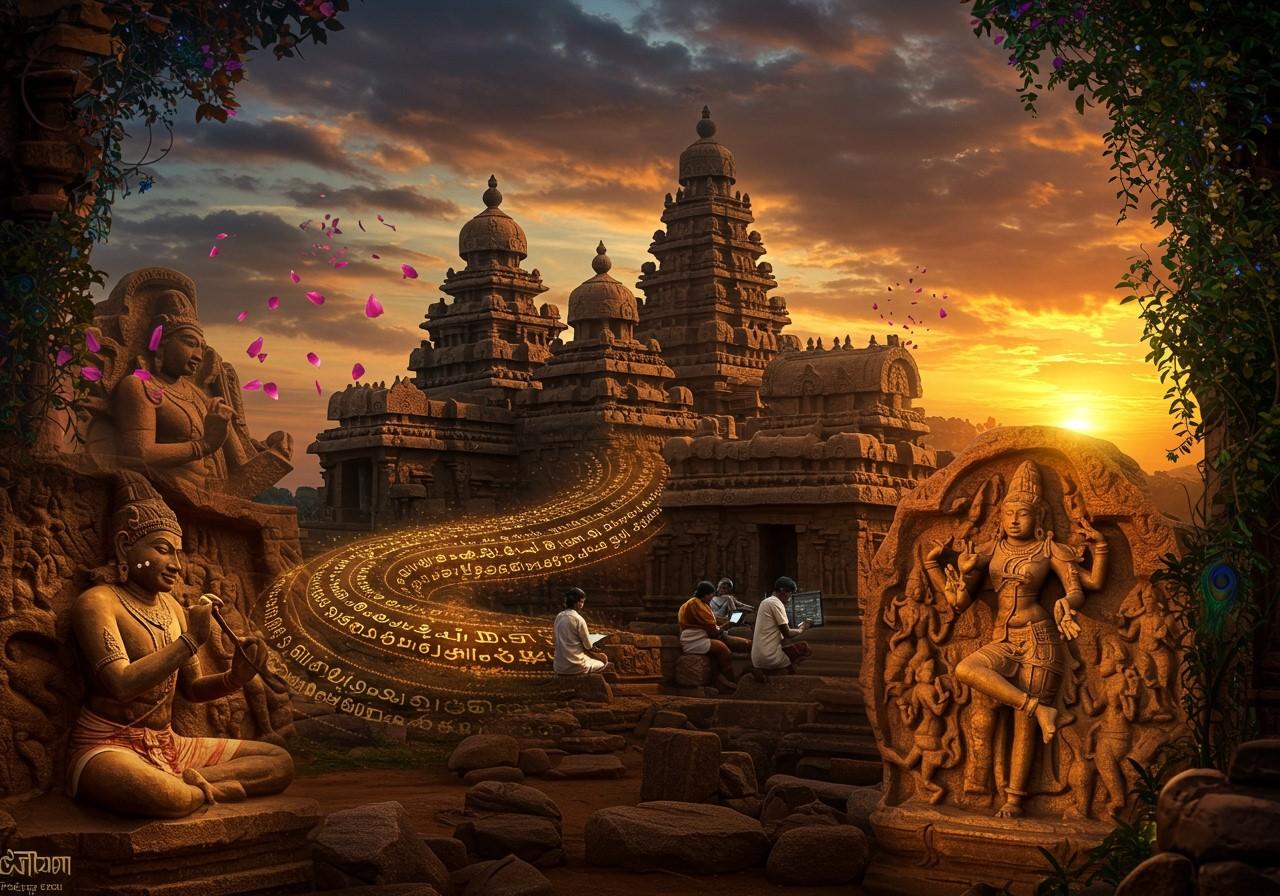
The Pallava dynasty, reigning over southern India from 275 CE to 897 CE, left an enduring legacy. Their contributions to early Dravidian art and architecture, literature, and overall culture are significant. This blog post delves into their remarkable achievements, exploring their influence on sculpture, painting, and literary works.
Historical Context
The Pallavas significantly shaped the trajectory of South Indian temple architecture. They pioneered the use of stone and mortar in temple construction, moving away from earlier brick and timber structures. This innovation marked a pivotal moment, influencing later architectural styles, especially those of the Chola dynasty. The reign of Mahendravarman I witnessed the peak of Pallava art and architecture, exemplified by the Vaikuntha Perumal Temple in Kanchipuram, the Shore Temple, and the Pancha Rathas at Mahabalipuram. Their patronage of scholars and artists fostered a vibrant cultural atmosphere.
Pallava Literature
Pallava literature enriched both Tamil and Sanskrit traditions. Royal patronage nurtured numerous poets and scholars, leading to a flourishing of literary works. Mahendravarman I, himself a playwright and author, exemplifies this literary inclination. Pallava literature skillfully integrated religious and philosophical concepts, demonstrating intellectual depth and preserving India’s cultural heritage. These texts offer valuable insights into the intellectual and spiritual life of the era.
Pallava Sculpture
Pallava sculpture stands out for its intricate detail and predominantly religious themes. Iconic examples at Mahabalipuram, such as the Descent of the Ganges and the Five Rathas, showcase their mastery. Characterized by realism and meticulous carving, these sculptures primarily depict Hindu deities, reflecting the religious fervor of the time. Pallava sculptural techniques significantly influenced later South Indian art forms and imbued temples with profound cultural meaning.
Pallava Paintings
While fewer in number than their sculptures, Pallava paintings hold substantial historical significance. Surviving murals within temples and caves offer glimpses into their artistic techniques, which employed fresco and tempera methods. These paintings frequently depicted religious narratives and scenes of courtly life, demonstrating their command of color and composition. Pallava painting traditions played a role in shaping the trajectory of South Indian mural art.
Enduring Influence
The Pallava legacy continues to resonate in modern South Indian art, literature, and culture. Their architectural principles remain influential in contemporary temple design, ensuring their continued relevance. Ongoing preservation efforts underscore the lasting impact of Pallava art forms on Tamil and Sanskrit literary traditions. The cultural significance of Pallava contributions is vital in promoting Indian identity and tradition, serving as a bridge between the past and the present.
How Poojn.in Helps Preserve Pallava Cultural Heritage
Poojn.in offers authentic puja items that connect you to the rich Pallava heritage. We cater to devotees interested in Lord Kartikeya, whose worship flourished during the Pallava period. Our offerings include:
- Brass and Copper Lamps: Pure brass and copper lamps, reminiscent of those used in ancient Pallava temples, create an ambiance of traditional worship.
- Traditional Puja Items: Kumkum and vibhuti holders, crafted in classic South Indian style, provide a tangible link to the past. Our curated puja thalis for Kartikeya worship streamline the ritual process.
- Authentic Puja Materials: Temple-grade camphor and dhoop enhance the authenticity of your rituals. Sacred threads and malas, made according to traditional specifications, complete the worship experience.
Our collection supports the continuation of time-honored worship practices from the Pallava era. Each product is carefully chosen to meet traditional standards while offering the convenience of online shopping. Whether you’re performing pujas at home or seeking to deepen your connection with Pallava heritage, our products provide a meaningful way to engage with these ancient customs in modern times. Visit www.poojn.in to explore our complete range.
For those performing pujas at home, we stock a comprehensive selection of essential items needed for traditional South Indian worship rituals. From Lord Shiva murtis to camphor, our products help maintain the authenticity of practices passed down through generations.
Badami Cave Temples
Kandariya Mahadeva Temple
Conclusion
The Pallava dynasty’s impact on South Indian art, literature, and culture is undeniable. Their architectural innovations, literary contributions, and exquisite sculptures and paintings laid the groundwork for artistic and cultural developments in the centuries that followed. The Pallavas’ legacy continues to inspire, reminding us of the importance of cultural preservation. Their remarkable achievements stand as a testament to their commitment to fostering a vibrant cultural landscape, one that continues to flourish today.


